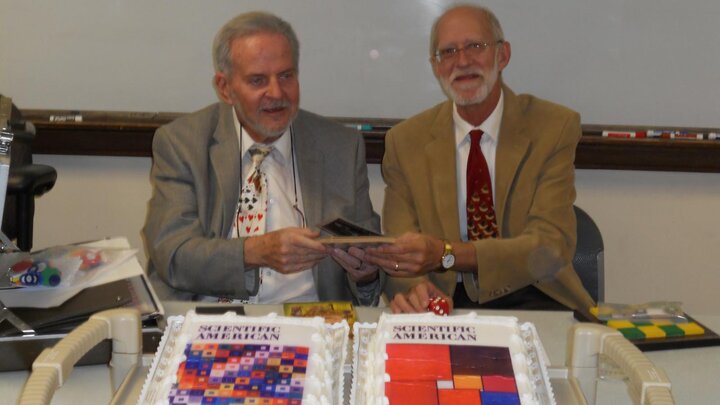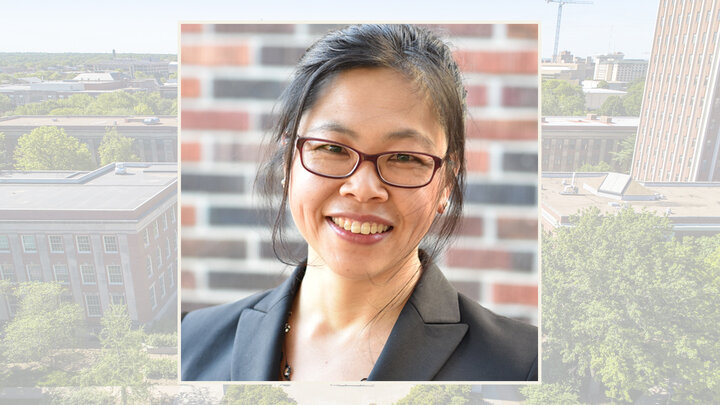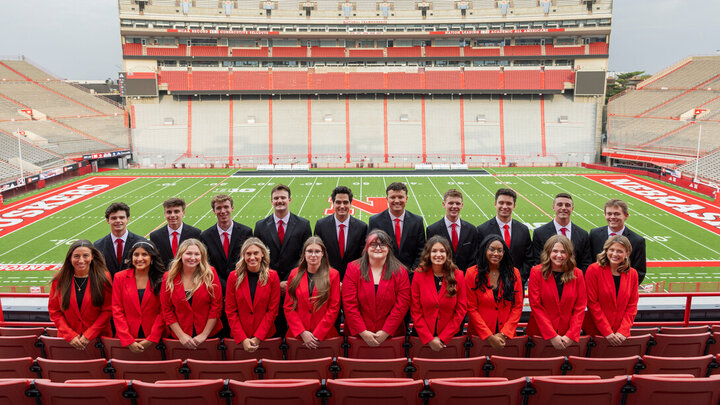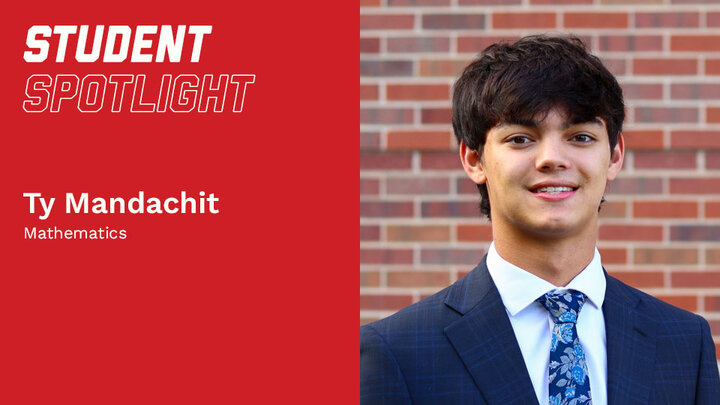Early on in life, Jeremiah (Jerry) Farrell discovered his passion for experimentation. The Hastings, Nebraska, native can recall blowing up a neighbor’s fence with a test apparatus that involved 10,000 volts when he was in grade school. At the time, he found chemistry and physics much more exciting than arithmetic.
While Farrell was a student majoring in mathematics, chemistry, and physics at the University of Nebraska-Lincoln in the early 1960s, he came under the influence of Martin Gardner’s “Mathematical Games” column in Scientific American magazine. An avid solver of crossword puzzles, Farrell’s passion for puzzles and recreational mathematics took off.
Farrell, professor emeritus of mathematics at Butler University in Indiana, maintains a vast personal collection of the works of Gardner, who is best known for creating and sustaining interest in recreational mathematics throughout the latter half of the 20th century. “Mathematical Games” ran for 25 years and was read avidly by a generation of mathematicians and physicists who grew up in the years 1956 to 1981.
“I have all of Gardner’s works, signed by him, since he was 16 years old,” Farrell said. “This includes his earlier stories in Esquire and Humpty Dumpty magazines.”
Farrell corresponded with Gardner in the 1970s, and Farrell and his wife, Karen, visited Gardner 20 to 30 times. In the September 1980 Scientific American, Gardner quoted Farrell on his invention of the term “emirp” (an emirp is a prime whose reversal is a prime).
In 1993, Farrell and his wife and their late friend Tom Rodgers formed the biannual “Gatherings for Gardner,” which meets in Atlanta and started as an invitation-only event for people connected with Gardner. Next April will be the 13th meeting, and Farrell is one of about six persons who has been at them all. The 450 participants exchange essays and puzzles.
Since Gardner’s death in May 2010, Farrell has participated in another annual group called “Celebration of Mind,” which meets all over the world to celebrate Gardner’s birthday (Oct. 21, 1914).
Farrell, who has taught at Butler since earning his master’s degree in mathematics at UNL in 1966, teaches at least one course while in retirement. This fall, he is teaching a course on Gardner with Dr. Steve Bloom.
Farrell is well known in his own right for having designed the 1996 “Election Day” crossword in The New York Times. One of the words had the clue “lead story tomorrow”, with the answer being 14 letters long. However, the puzzle had two correct solutions: One could be “Bob Dole elected”, and the other could be Bill “Clinton elected”. All of the “crossing” words were designed such that they could be one of two different words, to make either answer as needed.
“I got the idea for an election-day puzzle for the 1980 election, pitting Reagan against Carter, and composed one. I sent it to New York Times editor Eugene Maleska, but he was concerned that the independent candidate Anderson might win and so rejected it. I then sent it to Games Magazine but then editor Will Shortz had already prepared that magazine’s November issue,” said Farrell, who, during the 1970s, sold many puzzles to periodicals such as the Saturday Evening Post and Los Angeles Times. “Then, in 1996, Will and I were at a party, and he reminded me of the 1980 puzzle. I quickly prepared the 1996 election puzzle and sent it to Will, who was now editor of the New York Times puzzle. He loved it and ran it and praised it for many years.”
The Election Day crossword was discussed at length in Allan Connor’s The Crossword Century. Farrell’s most recent puzzle ran in the MAA Journal in May 2017 and was composed with his current chairman Bill Johnston. See the puzzle at: https://www.maa.org/amm_supplements.
Farrell has written puzzles for many other books and newspapers, such as Scott Kim’s puzzle column for Discover magazine. He also was featured in the New York Sun for solving the Washington Square Park puzzle in 2006. He and his wife also edit and publish Word Ways: The Journal of Recreational Linguistics, which is now in its 50th year.
In addition, Farrell and Butler professor Matt Maurer have done much work with the Indiana School for the Blind, teaching the students problem solving with mathematical games and puzzles. Farrell also has been active for over 20 years in the annual International Puzzle Party.
Farrell credits geometry for showing him that mathematics could be as exciting as science experiments.
“It was amazing to be able to construct proofs on my own,” Farrell said. “In 1952, I obtained a copy of Kai Nielsen’s book ‘Problems of Plane Geometry’ and worked every problem in it. In 1973, after I was teaching at Butler, Dr. Nielsen became my chairman and signed his book for me. I still have it.”
For more on Farrell’s works see, https://works.bepress.com/jeremiah-farrell.




